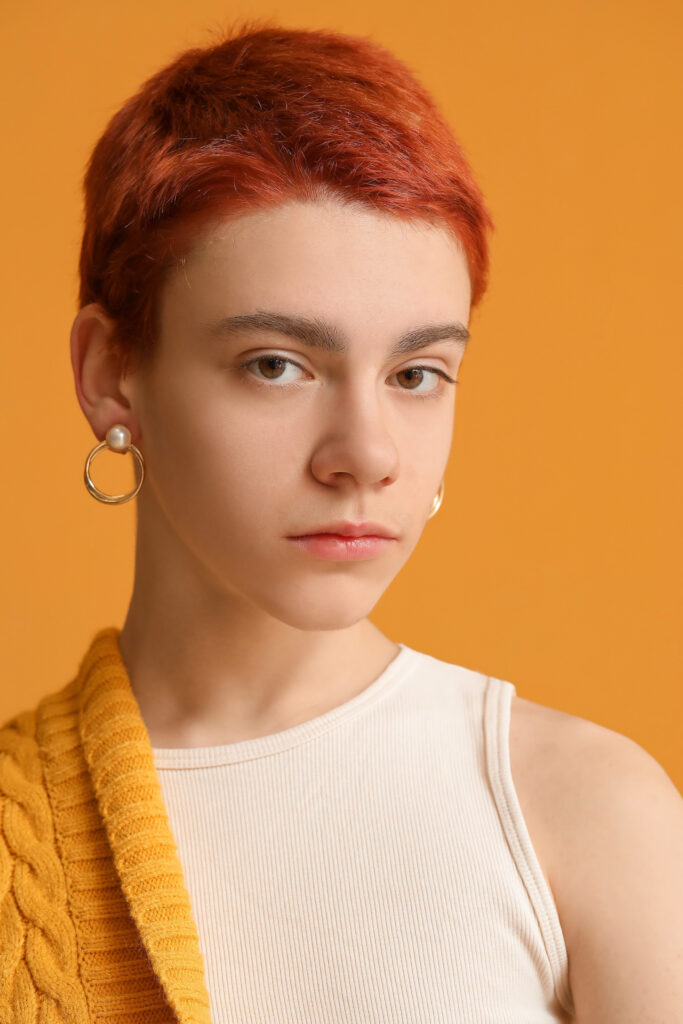 Top surgery, often one of the most affirming steps in a person’s gender journey, is not a one-size-fits-all experience. Whether you identify as a transman (FTM) or a gender nonbinary individual (FTN), your goals for chest surgery are personal and powerful.
Top surgery, often one of the most affirming steps in a person’s gender journey, is not a one-size-fits-all experience. Whether you identify as a transman (FTM) or a gender nonbinary individual (FTN), your goals for chest surgery are personal and powerful.
While FTM and FTN top surgery share many foundational elements, the nuances of each path can vary based on how each person envisions their ideal chest appearance. In this guide, we’ll dive into the shared ground between the two, explore where they can diverge and look at surgical techniques, recovery and important considerations for customizing your outcome.
Shared Foundations of FTM and FTN Top Surgery
At their core, both FTM and FTN top surgeries aim to reduce or remove breast tissue in a way that alleviates gender dysphoria and helps individuals feel more aligned with their gender identity. The desire to eliminate undesirable curves and chest projections that don’t reflect one’s self-image is common across both groups. The ultimate goal may be to achieve either a flat, masculinized chest, a more androgynous look or other some other profile in order to feel more at home in one’s body
The Overlapping Goals Include:
- Near total removal or a substantial reduction of breast tissue
- Optional removal, repositioning or resizing of the nipple-areola complexes (NACs)
- Creation of a chest that is flatter, firmer and more in line with the individual’s gender vision
- Relief from dysphoria and improved psychological well-being
Key Differences: FTM vs. FTN Surgical Preferences
While many gender nonbinary individuals choose the exact same surgical methods as transmen, there is often more variation in their desired outcomes. Some may want a chest that is completely flat and traditionally masculine including the nipple-areola complex size and location while others seek the same look sans nipple-areola complexes or prefer a more androgynous look -retaining a small amount of breast volume for aesthetic or identity reasons.
Then there are transmen who desire a flat chest but do not want nipples.
FTM Goals Often Include:
- A flat, traditionally masculinized chest with nipple-areola complexes
- Reduced and repositioned nipple-areola complexes to reflect male anatomy
- Scar placement designed to more resemble cis-gender male chest contours
FTN Goals May Include:
- A flat, traditionally masculinized chest with or without nipple-areola complexes
- More flexible placement and/or sizing of the nipples
- Retention of small breast volume in some cases – as in a gender affirming breast reduction (often an “A” or “B” cup)
- Blending masculine and feminine characteristics for a personalized look
Common Surgical Approaches
Several well-established surgical techniques are used for both FTM and FTN top surgery patients, depending on body type, chest size, skin elasticity and personal goals. The most commonly used ones are as follows:
1. Double Incision Mastectomy with or without Nipple-Areola Complex Grafts
Best for: Medium to large chest sizes or patients with less skin elasticity. Can also be used with smaller chest sizes for a variety of reasons.
What it involves: Curvilinear, oblique or horizontal incisions that include removal of breast tissue and excess skin.
Nipples: Can be removed and grafted in a more masculine or preferred position/size or omitted altogether.
Scarring: Linear or curvilinear scars on each side of the chest which will fade significantly over time and can even become relatively inconspicuous.
2. Periareolar (Concentric Circle) Technique
Best for: Small chests with tight skin.
What it involves: A circular incision around the areola to remove tissue and reduce areola size.
Nipples: Remain attached with blood supply. Sensation may be substantially or partially be retained. There is effectively no change in location on the chest wall.
Scarring: Limited to the border of the areola which can be virtually, if not completely, inconspicuous.
3. Keyhole Technique
Best for: Very small chest sizes with excellent skin elasticity.
What it involves: A half-circle incision at the bottom of the areola to remove tissue.
Nipples: Are preserved in place; no resizing or re-positioning.
Scarring: Hidden in natural contours and virtually, if not completely, inconspicuous.
Additional Techniques Tailored to FTN Patients
Many FTN individuals want results that don’t conform strictly to a masculine aesthetic. They may want a softer contour, retained breast volume or a hybrid approach.
4. Breast Reduction
Ideal for: Those who want small breasts but not a flat chest.
Outcome: Retains some breast tissue – often targeting a small cup size – typically an “A” or “B” cup.
Nipples: Usually preserved; size and position can be adjusted.
Flexibility: Often preferred by those who are gender fluid or androgynous.
5. Custom Contouring and Liposuction
Used to fine-tune chest shape without a full mastectomy.
Can soften edges, smooth transitions and reduce volume strategically.
Especially beneficial for individuals whose gender expression is more fluid or nonconforming.
Making Sense of the Options: A Quick Comparison
| Feature | FTM Top Surgery | FTN Top Surgery |
| Main Goal | Masculinized flat chest | Masculinized flat chest; androgynous or custom-contoured chest |
| Breast Tissue Removal | Nearly complete | Nearly complete or majority, depending on preference |
| Nipple Changes | Often resized and relocated | May be preserved, repositioned and resized or removed |
| Nipple Sensation | Not generally a relevant issue | Not generally a relevant issue; rarely a consideration |
| Techniques Used | Double incision, periareolar, keyhole | All FTM options + breast reduction, custom methods |
| Scarring | Curvilinear, linear or minimal | Curvilinear, linear, anchor shaped or minimal |
| Custom Features | Masculine focus | Masculine focus or highly variable, individually tailored |
Recovery Experience
Recovery varies more by procedure than by identity. For example, a double incision mastectomy with a free nipple graft and a periareolar mastectomy will have exactly the same recovery regardless of whether the patient is FTM or FTN. The emotional and psychological recovery may be influenced by how well the surgical result aligns with one’s gender vision as well as a multitude of other factors.
Choosing What’s Right for You
Your top surgery should reflect your specific goals, not a template. That’s why it’s crucial to work with a surgeon who not only specializes in gender-affirming procedures but who also listens to you and understands your unique desires and goals as well as the range of gender identities, expressions and possibilities.
Some questions to consider:
- Do I want a flat masculinized chest?
- Do I want nipple-areola complexes? If yes, do I want them masculine in appearance, less feminine or somewhere between cis-gender male and cis-gender female in size and/or location?
- For FTN – Do I prefer a flat masculinized chest or an androgynous contour?
- What am I comfortable with in terms of scarring?
- Do I want the option to “dress up or down” my chest with padding or clothing?
Top Surgery in Arizona: Start Your Journey
At the Arizona Center for Aesthetic Plastic Surgery, Dr. Steven H. Turkeltaub has decades of experience helping patients achieve life-affirming transformations. As a plastic surgeon board-certified by the American Board of Plastic Surgery, he approaches every patient and procedure with precision, compassion, and an understanding of the deeply personal nature of top surgery.
If you’re exploring FTM or FTN top surgery and want experienced, compassionate and individualized guidance and care, you’re invited to schedule a consultation with Dr. Steven Turkeltaub. Call us at (480) 451-3000 or fill out our online contact form to get started.
Steven H. Turkeltaub, M.D. P.C.
Scottsdale and Phoenix, Arizona






